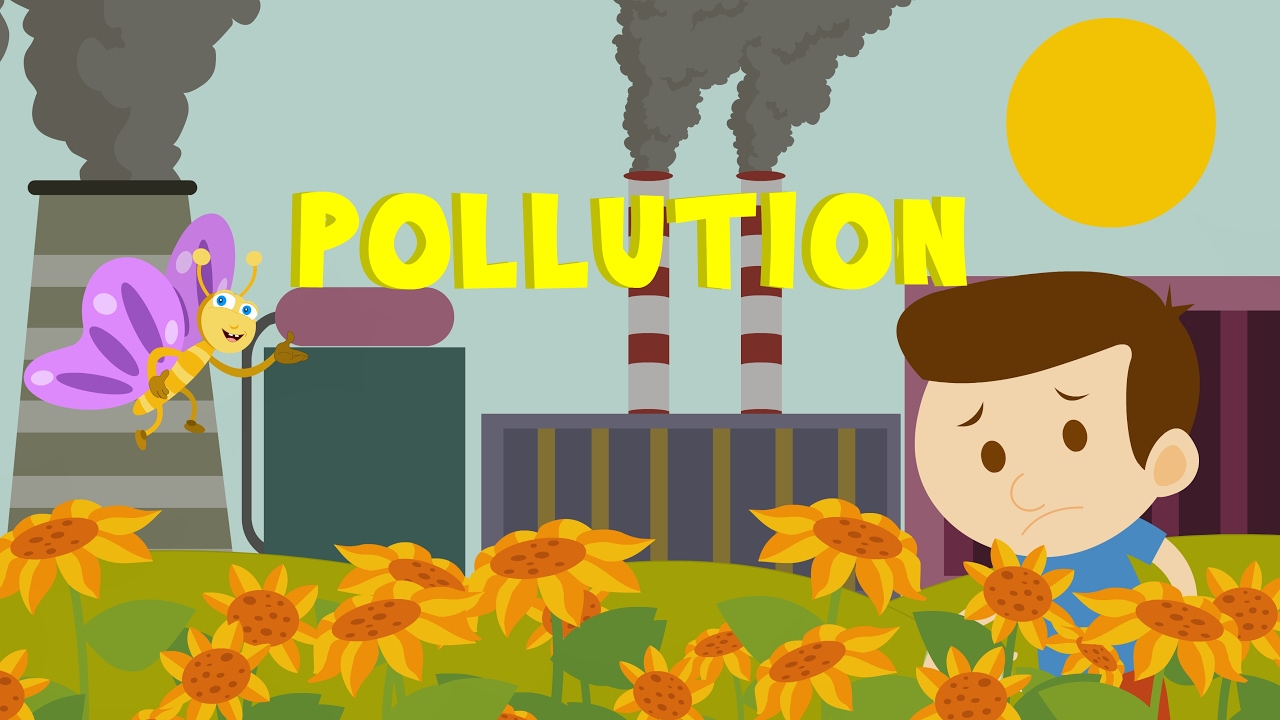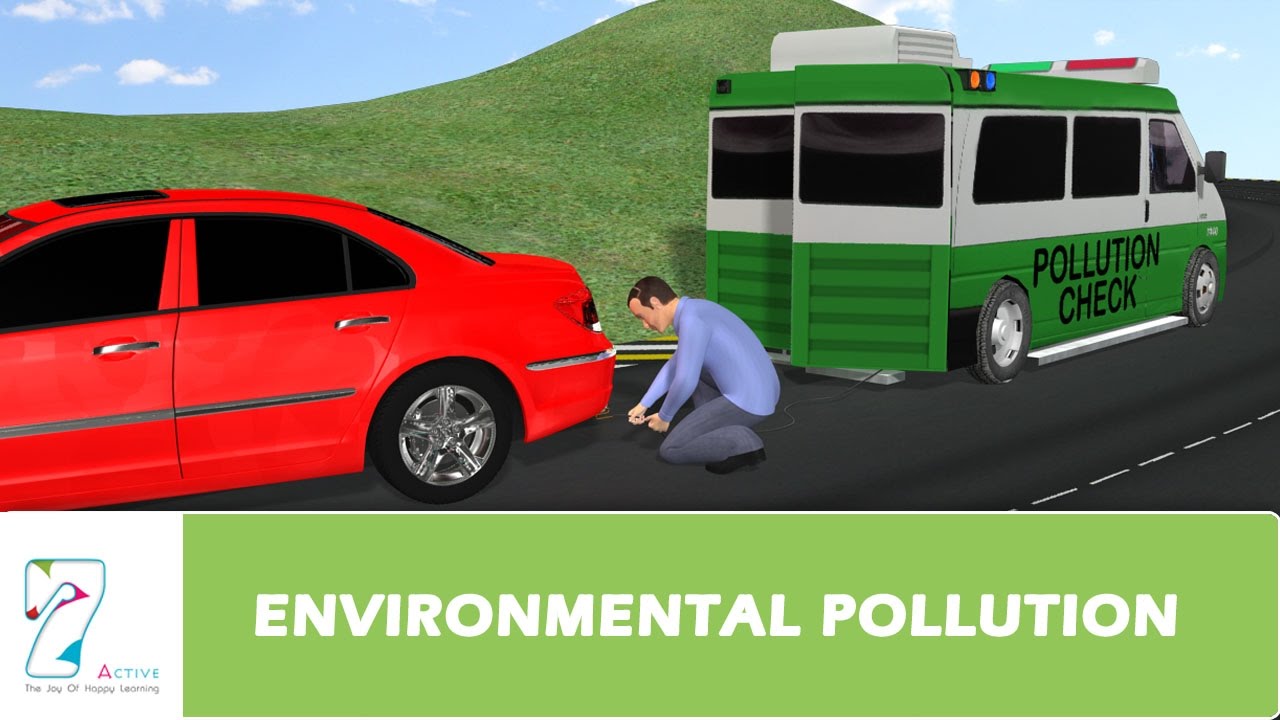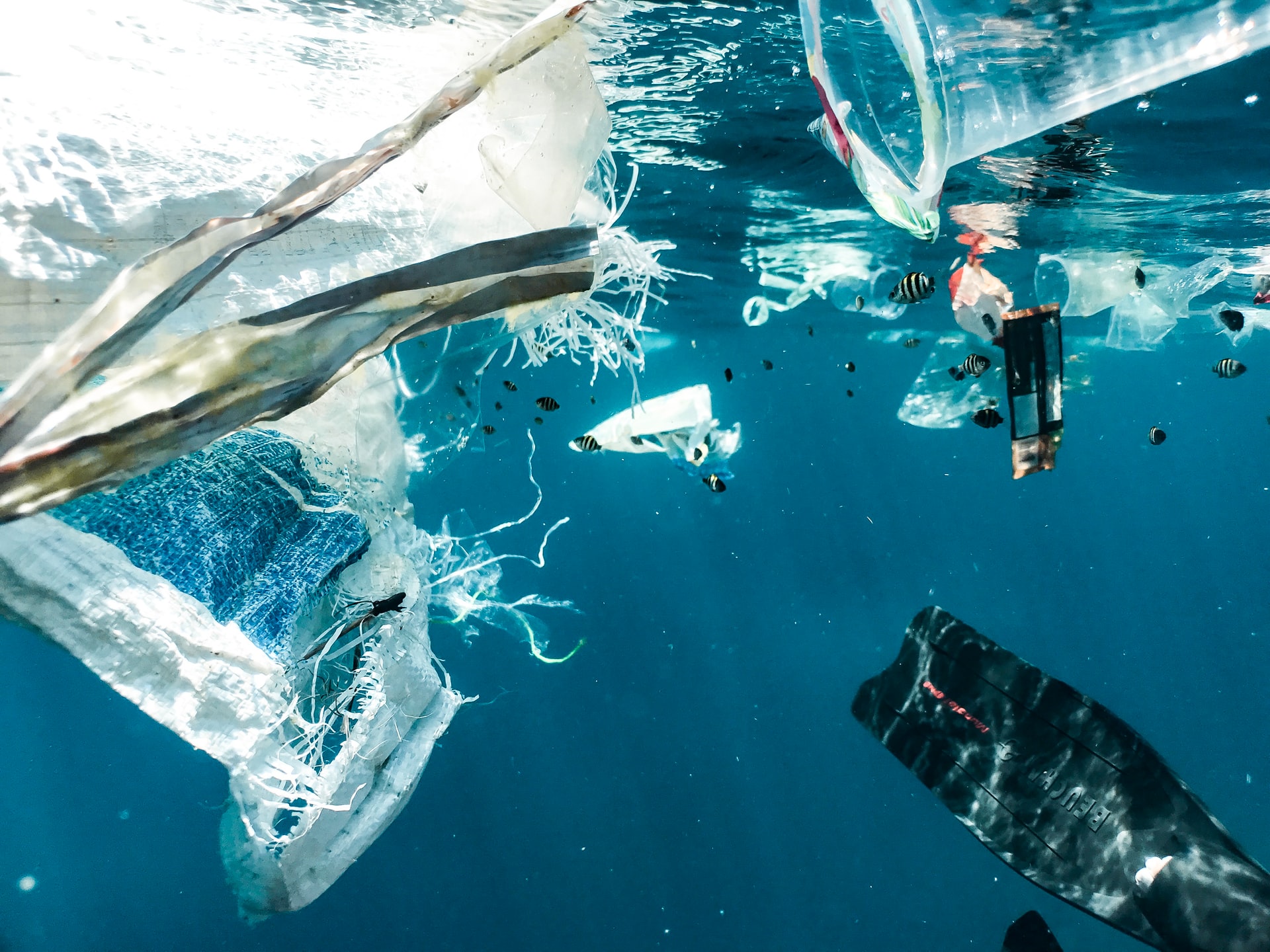Mental Health - The Stress Hypothesis Of The Negative Effects Of Pollution
Two classes of well-researched environmental contaminants (ECs) have been shown to have an effect on both physical and mental health: toxic metals and persistent organic pollutants (POPs). Regulations have successfully been put in place since the 1970s to lessen human exposure to these toxins. Recent research has demonstrated that toxic metals and POPs have negative effects on both physical and mental health at very low exposure levels.
Author:Suleman ShahReviewer:Han JuAug 08, 2022157 Shares2.5K Views

Two classes of well-researched environmental contaminants (ECs) have been shown to have an effect on both physical and mental health: toxic metals and persistent organic pollutants (POPs).
Regulations have successfully been put in place since the 1970s to lessen human exposure to these toxins.
Recent research has demonstrated that toxic metals and POPs have negative effects on both physical and mental healthat very low exposure levels.
These contaminants' detrimental effects on both physical and mental health may be explained by their endocrine-disrupting characteristics.
Studies have primarily concentrated on the sexual steroids pathway in the newly emerging field of research on endocrine disruptors.
As a result, the corticosteroid pathway, also known as the stress pathway, has received little attention in the quest to understand how ECs affect mental health.
The detrimental effects of pollution on mental health are covered in this essay.
Environmental Contaminants
It is common knowledge that humans are exposed to ECs.
Two classes of well-researched toxic substances with detrimental effects on health are toxic metals and POPs.
Chronic exposure to these contaminants is common despite public regulation efforts to reduce exposure sources.
Everyone is at risk for environmental toxin exposure, but children and elders are especially vulnerable.
In proportion to body weight, children consume more food, water, and air than adults. They're also more exposed through playgrounds and hand-to-mouth.
During childhood and adolescence, the brain is especially vulnerable to environmental toxins, and even minute exposures can be devastating.
Older adults have a lifetime's worth of ECs, and their brains can't compensate for environmental insults as well.
The elderly have been exposed to more contaminants than younger generations because of recent bans or restrictions.
Toxic Metals
Lead and mercury pose the biggest risks to human health when it comes to toxic metals.
For thousands of years, these harmful metals have been used in a variety of applications.
One of the first poisons to be discovered was lead. It has been used in ceramic glaze pigments and water pipe construction for at least 5000 years.
Wine was sweetened in antiquity by the use of lead acetate.
Romans may have ingested up to a gram of lead per day, which may have contributed to the Roman Empire's decline.
Mercury was used to relieve teething pain in the Roman Empire.
In the 14th to 18th centuries, mercury was used to treat syphilis, leading to the myth that Mozart died from mercury poisoning.
Although toxic metals' health effects have been known for a long time and their use has been restricted, exposure to them continues and is even increasing in some areas.
Africa and Latin America still use mercury for gold mining.
Even though lead has been banned as an on-road gasoline additive in developed countries, it is still used in aircraft, racing cars, farm equipment, and marine engines.

Learn about Pollution | Environment Defilement | Cartoon
Lead
Most environmental lead is human-made. Air, water, and food are the main sources of lead exposure to humans.
Lead accumulates in the skeleton and is released slowly. The half-lifeof lead in the skeleton is 25 to 30 years.
Lead is bound to proteins and sulfhydryl compounds in blood, preventing it from crossing the blood–brain barrier.
Free lead in the blood crosses the blood–brain barrier quickly.
Due to its ability to replace calcium ions, lead can pass through this barrier. Lead enters the brain via Ca-ATPase pumps.
The developing blood–brain barrier is more permeable in fetuses and infants, allowing free and bound lead to reach the brain.
Age-related bone demineralization exposes the elderly to lead by releasing accumulated lead into the blood.
Mercury
Anthropogenic and natural sources pollute mercury. Its inorganic form makes up the majority of the mercury that is found in the environment.
However, through a process known as biomethylation, mercury that is present in the soil naturally as well as mercury that has been dumped there by human activity becomes methylmercury.
It is very toxic to consume this organic form of mercury.
Animals' liver and kidneys store methylmercury, which is then biomagnified as it moves up the food chain.
Methylmercury is primarily consumed by humans through food, particularly fish and marine mammals.
It is known that methylmercury can pass through the placenta and the blood-brain barrier and build up in the brain and fetus.
Persistent Organic Pollutants
Organic POPs are resistant to chemical, photolytic, and biological degradation. These chemicals have very low water solubility and high lipid solubility.
Most POPs are halogenated, especially with chlorine.
Single or multiple halogen elements, like fluorine, chlorine, bromine, or iodine, bound to their structure give POPs stability and lipid solubility.
POPs therefore persist in the environment. They bioaccumulate in human and animal fat, biomagnify in the food chain, and can harm health.
POPs' high lipid solubility allows them to pass through biological barriers like the placental and blood-brain.
Virtually, all humans are thought to store POPs in fat tissues.
POPs come from human sources like the manufacture, use, and disposal of organic chemicals.
From the 1930s to 1980s, POPs were widely used. Some POPs are still present even though they have been prohibited or restricted.
Dichlorodiphenyltrichloroethane, a pesticide banned for more than 40 years, is ingested through food. Legacy POPs include PCBs and chlorinated pesticides.
Environmental Contaminants And Mental Health
In adulthood, even low levels of exposure to ECs are associated with mental health, such as blood lead levels and depressive symptoms in the US population.
Mental health disorders in childhood can be hard to identify early, so studies have focused on neurobehavioral outcomes.
Significant associations are mostly limited to emotional/behavioral (activity, attention, emotion) and cognitive abilities.
Specifically, a comprehensive review of prospective PCB cohorts suggested that, among the cognitive functions assessed, executive functions were most affected.
According to Grandjean and Landriga, EC exposure has caused a pandemic of neurodevelopmental disorders.

ENVIRONMENTAL POLLUTION
Dose Of Exposure And Clinical Management Of Contaminant Exposure
In toxicology, higher doses cause greater effects and toxic substances are harmless in small doses.
Based on 16th-century observations by Paracelsus, the founder of toxicology. It is paraphrased as ‘The dose makes the poison’.
Several epidemiological studies have shown that low dose exposure to ECs is associated with human diseases and disabilities.
Many chemicals appear to have a greater impact on human development at low doses than at higher doses.
In a pooled analysis, lead-associated IQ deficits were greater at lower blood lead concentrations.
The dose-response curve for those substances is non-monotonic.
Like biological U-shaped or inverted U-shaped curves, their slope reverses from negative to positive or vice versa.
Non-monotonicity has striking health implications; it means environmental chemical concentrations are more concerning than current testing conditions.
The complications identified by epidemiological studies supporting the non-monotonicity of chemicals, such as cancer, obesity, heart disease, IQ, and ADHD, contribute to the steadily increasing burden of human disease and escalating health care costs worldwide.
Lead Exposure And Clinical Management
The most extensively researched EC has been lead, especially in kids. Lead exposure in children has the most comprehensive screening and management strategy.
Lead exposure causes 1% of the global disease burden in children, according to WHO. In developing countries, lead causes 15%–20% of mental retardation.
Lead poisoning is a tragedy for the child and his/her family and has societal and economic costs.
In the US, lead poisoning in childrenis 20 times worse than asthmaand 120 times worse than cancer, costing $43.4 billion annually.
Each 1 μg/dl increase in blood lead reduces IQ by 0.87 points in a population. Additionally, the rate of decline in intellectual impairment is faster below 10 μg/dl of blood lead than above.
When children are exposed to blood lead levels of 10 μg/dl during pregnancy as opposed to 3 μg/dl, their IQ drops by 4.8 points.
This is a serious situation because a 5-point decline in IQ causes a 57% increase in the population's "mentally retarded" individuals who need remedial education. The societal repercussions are unquestionably severe.
Therefore, clinical management of lead exposure in children is crucial.
Endocrine-Disrupting Chemicals
Early observations of reproductive organ malformations and abnormal sexual behaviors in wildlife revealed ECs' ability to interfere with steroid hormone action.
WHO defines an endocrine-disrupting chemical as 'an exogenous substance or mixture that alters endocrine function(s) and causes adverse health effects in an intact organism, its progeny, or (sub)populations'
In a 2013 report, the WHO called for more research on endocrine disruptors' health effects.
The sexual steroid system has been widely studied and will continue to be, but the stress steroid system has received less attention.
The Stress System
Two major factors have contributed to increased inter-individual variability in behavior and cognitive performance over the past three decades.
The first factor relates to genetics and the second relates to stress. A stressful situation activates the hypothalamic–pituitary–adrenal (HPA) axis.
The last secretory byproduct of HPA activation is glucocorticoids (GCs; in humans, cortisol).
GCs can easily cross the blood–brain barrier and enter the brain, where they can influence brain functions and behavior by binding to different receptor types.
The hippocampus and frontal lobes contain GCs receptors and are involved in memory and emotional/behavioral maladjustments like impulsivity.
HPA dysfunction has been linked to impaired executive functions, emotional/behavioral adjustments in children and adolescents, and memory complaints in the elderly.
ECs may disrupt the stress system, affecting the release of GCs after stress.
In fish, amphibians, birds, and large mammals, toxic metals (lead, mercury) and organic contaminants (PCBs, solvents, pesticides) impair the stress system.
Oskamet al. found that pesticides, PCBs, and their interactions explained over 25% of cortisol variation.
Early exposure to PCBs and toxic metals in rodents altered the system that controls GCs.
Structure-activity studies show that some PCBs act as antagonists at humanGCs receptors and that dioxin-like PCBs alter GCs biosynthesis in human adrenocortical cells.
Low-level lead exposure increases GCs' responses to acute stress in 9–10-year-olds, according to a study.
A recent study found a link between lead exposure and higher ACTH:CORT ratio in occupationally exposed participants, suggesting a lead-induced alteration of the HPA axis.
People Also Ask
How Does Pollution Affect Mental Health?
There is growing proof that breathing in polluted air is also bad for your brain.
Over the past ten years, researchers have discovered that excessive air pollutionmay harm children's cognitive development, raise the risk of cognitive aging in adults, and possibly even cause depression.
How Can Pollution Affect You Emotionally?
The studies he looked at demonstrate that air pollution can aggravate irritation, anxiety, depression, and general life unhappiness.
In addition to crime, self-harm, and suicide, pollution is linked to these other negative behaviors.
How Does Pollution Cause Depression?
According to research by Mohan Kumar et al, air pollutants, specifically particulate matter, cause the brain to become oxidized and inflamed, which can result in depression.
According to Vert et al., for every 10 g/m3 increase in nitric oxide levels, the rate of depression increased by two times.
How Does Pollution Cause Stress?
Recent studies have demonstrated that the hypothalamic-pituitary-adrenal (HPA) axis activation and the release of stress hormones are among the early biological reactions brought on by exposure to air pollutants.
Conclusion
Children and seniors are more vulnerable to ECs than adults.
Even at low exposure levels, ECs have been shown to harm cognitive function, behavioral development, and mental health.
According to what has been demonstrated in this review, one plausible mechanism by which these compounds could interfere with the stress system to induce neurobehavioral impairment is through the endocrine-disrupting properties of ECs.
Jump to

Suleman Shah
Author
Suleman Shah is a researcher and freelance writer. As a researcher, he has worked with MNS University of Agriculture, Multan (Pakistan) and Texas A & M University (USA). He regularly writes science articles and blogs for science news website immersse.com and open access publishers OA Publishing London and Scientific Times. He loves to keep himself updated on scientific developments and convert these developments into everyday language to update the readers about the developments in the scientific era. His primary research focus is Plant sciences, and he contributed to this field by publishing his research in scientific journals and presenting his work at many Conferences.
Shah graduated from the University of Agriculture Faisalabad (Pakistan) and started his professional carrier with Jaffer Agro Services and later with the Agriculture Department of the Government of Pakistan. His research interest compelled and attracted him to proceed with his carrier in Plant sciences research. So, he started his Ph.D. in Soil Science at MNS University of Agriculture Multan (Pakistan). Later, he started working as a visiting scholar with Texas A&M University (USA).
Shah’s experience with big Open Excess publishers like Springers, Frontiers, MDPI, etc., testified to his belief in Open Access as a barrier-removing mechanism between researchers and the readers of their research. Shah believes that Open Access is revolutionizing the publication process and benefitting research in all fields.

Han Ju
Reviewer
Hello! I'm Han Ju, the heart behind World Wide Journals. My life is a unique tapestry woven from the threads of news, spirituality, and science, enriched by melodies from my guitar. Raised amidst tales of the ancient and the arcane, I developed a keen eye for the stories that truly matter. Through my work, I seek to bridge the seen with the unseen, marrying the rigor of science with the depth of spirituality.
Each article at World Wide Journals is a piece of this ongoing quest, blending analysis with personal reflection. Whether exploring quantum frontiers or strumming chords under the stars, my aim is to inspire and provoke thought, inviting you into a world where every discovery is a note in the grand symphony of existence.
Welcome aboard this journey of insight and exploration, where curiosity leads and music guides.
Latest Articles
Popular Articles
